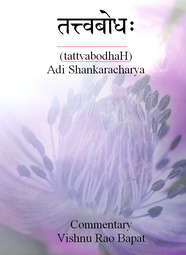Q: Is final liberation from brith and death cycle guaranteed for everyone? Will some individuals attain liberation in 300 lifetimes, others in 300.000 but it will always be a finite time? Or is it the case that some individuals can collect worse and worse karma and as a result experience more and more suffering without end?
A (Dennis): I don’t really like this sort of question! Implicit in the question is the assumption that there really are individual people who undergo birth and death and rebirth. This, of course, is how it seems to be from the vantage point of the mind ‘before liberation’. And traditional advaita certainly teaches all of this in the beginning. However, the ‘bottom line’ of advaita is that there never has been any creation; there are not really any jIva-s or worlds; there is not really any karma or reincarnation. So, in the end, the question is meaningless. The truth is that there is only ever brahman or Consciousness, and brahman ever was and ever will be; no birth or death, no heaven or hell.
This may not be the answer you were looking for but I don’t want to give you an interim explanation which has to be taken back later.
Q: There is still the fear in me that my suffering will never end. It does not matter that this is only from a relative dreamer perspective. When I was young and stupid, I had an obsessive compulsive disorder which make me perform rituals. I had to do them in the proper sequence and time and told myself that if I ‘pass’ I will be happy forever and if I not I will suffer worse and worse pain – progressive suffering forever – the worst imaginable fate.
A: What you have to understand is that you are not these ideas in your mind. In fact, you are not the mind or body. One of the most useful metaphors is to think of the mind as a ‘reflector’ of consciousness, in a similar way to a mirror being a reflector of light. Just as the sun in the mirror is not the real sun, so the consciousness in your mind is not the real Consciousness. You currently think that you are the reflection but who you really are is the Consciousness itself, which ‘shines’ independently of the existence of the reflection. It is only the reflection that thinks it is suffering, just as a dirty mirror might ‘think’ that it is not reflecting properly. You are really eternal and ever free, unaffected by anything.



 Note that this is the Concluding part
Note that this is the Concluding part